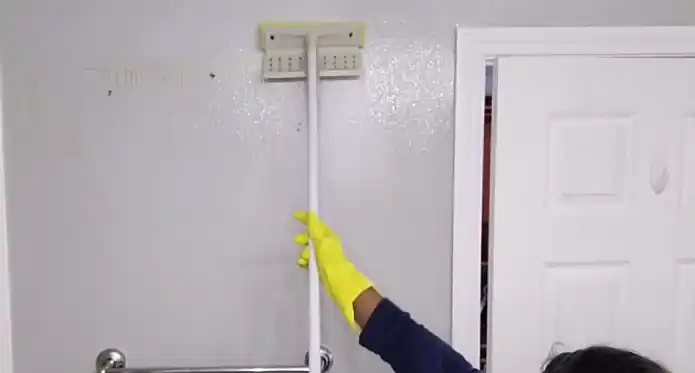Last Updated on November 14, 2023
Battling the dreaded steam marks on your bathroom walls can be an arduous task. If you’ve been frustrated with these pesky patches, then rest assured. Learn how to clean steam marks from bathroom walls so your bathroom looks spotless once again.
You can easily combat them with common, everyday household items. Vinegar, baking soda, and lemon juice are all powerful natural solutions that banish blemishes.
It’s also advisable to take steps to prevent future issues. Pinpoint why they’re appearing (like high humidity levels), then strike back before they do any more havoc.
Take our steam marks cleaning instructions to heart, and consider making changes to the environment of your bathroom, such as installing an exhaust fan or a window. Let’s dive into all the procedures.
How to Clean Steam Marks from Bathroom Walls: DIY Steps
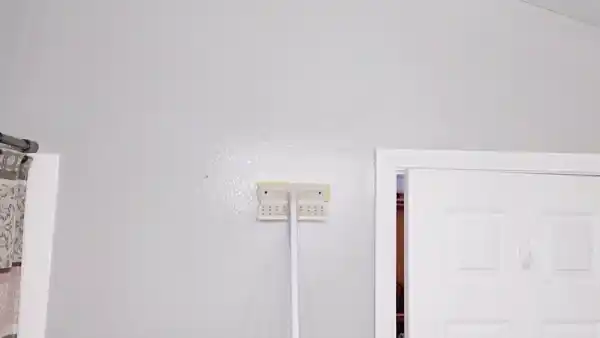
Step 1: Gather the Supplies
Before you start cleaning steam marks from your bathroom walls, it’s important to gather the right supplies. You will need a mild detergent, warm water, white vinegar, a soft cloth or sponge, an old toothbrush, and a vacuum cleaner.
Step 2: Preparing the Wall
To begin removing steam marks from your bathroom wall, start by vacuuming the whole wall to remove any dirt and dust particles that could get in the way of you cleaning it properly. Make sure to use the brush attachment on your vacuum cleaner to not accidentally scratch or damage the wall surface.
Step 3: Create a Cleaning Solution
Next, create a cleaning solution using one cup of mild detergent mixed with one gallon of warm water (not hot). Soak your cloth or sponge into this mixture and wring out any excess liquid. Do not scrub too hard when wiping down the walls, as this can cause further damage.

Step 4: Cleaning Steam Marks from Walls
Gently dab at each steam mark until it is removed. If there are more difficult areas, then use an old toothbrush dipped in either soap and warm water or vinegar and water, whichever works best for your surface material, to clean these areas more thoroughly.
When finished with each area, rinse off with clean cold water and dry off with a cloth or sponge or let air-dry instead.
Step 5: Final Touches
Once all steam marks are removed, and all surfaces are dry, polish off any remaining streaks by polishing them with a soft cloth in circular motions until they look shiny again.
This helps give back the natural sheen previously blocked by stains or dirt buildup on them. Lastly, apply some furniture wax to ensure that no new stains can settle into them for future protection.
Remove Steam Marks from Bathroom Walls
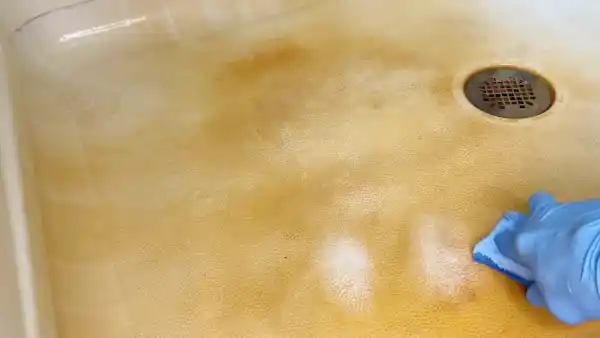
Bathroom walls with steam marks can be unsightly. Moisture and soap scum accumulate on the walls, causing these steam marks. These marks can easily be removed with a few simple cleaning solutions. The following methods will help you remove steam marks.
Removal Method 1: Using Vinegar and Water
To clear steam marks from bathroom walls, a mixture of vinegar and water can be used. To prepare the cleaning solution, mix one-part vinegar with two parts warm water in a bucket.
Using a soft cloth or sponge, apply the solution to the steam-marked area and scrub gently. Rinse off the solution with clean, warm water afterward and dry off with a soft cloth.
The acidity of the vinegar helps to literally “eat” away at dirt and grime while also dissolving any soap scum or calcium deposits that may have been left behind by steam.
As an additional bonus, it sanitizes the steam-marked area as well due to its disinfectant properties. For tougher stains, vinegar can be applied directly onto the affected area without dilution. Leave it on for 30 minutes before rinsing it off with warm water.
Removal Method 2: Using Baking Soda and Water
Baking soda is another great product for removing steam marks from bathroom walls. To use it, create a paste using baking soda and warm water in a bowl. Then apply the paste directly onto the affected area using a brush or cloth.
Gently scrub in circular motions until all residue has been removed from the bathroom wall surface. Afterward, rinse off with clean, warm water and dry thoroughly with a soft cloth.
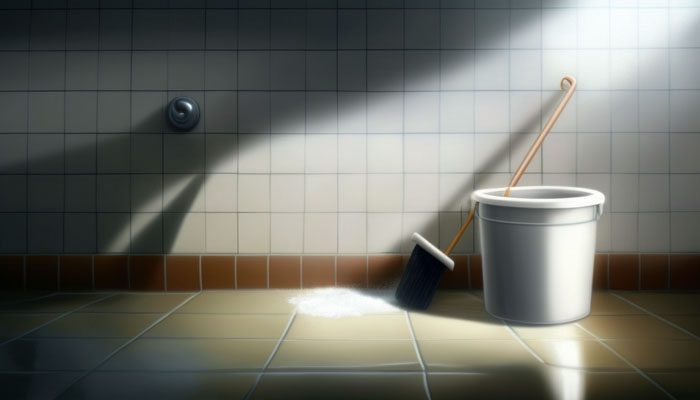
Baking soda is known for its abrasive properties, which makes it great for removing stubborn debris or scratches from hard surfaces like porcelain or ceramic sinks, making it ideal for cleaning away streaks caused by steam on bathroom walls too.
Removal Method 3: Using Lemon Juice and Water
Lastly, lemon juice can be used as an effective way of reducing steam marks on bathroom walls as well. Create a cleaning solution by mixing equal parts of lemon juice with warm water in a spray bottle.
Spray onto affected areas, then let it sit for up to 10 minutes before wiping down with a damp cloth or sponge set aside for this purpose only (as lemon juice can cause discoloration on fabrics).
Use gentle circular motions when scrubbing away any remaining residue being careful not to damage wall surfaces in the process.
The citric acid found in lemons helps break down dirt particles quickly while leaving behind a pleasant lemony scent, perfect if you don’t want your home smelling like bleach after cleaning.
The Causes of Steam Marks on Bathroom Walls

The main causes of steam marks are a lack of proper ventilation, high humidity levels, and incorrect cleaning methods.
Cause A. Lack of proper ventilation
A lack of proper ventilation can cause steam marks to form on surfaces. This is because the steam will have nowhere to go and will condense on surfaces. This can be prevented by ensuring that there is adequate ventilation in the room.
Cause B. High humidity levels
High humidity levels can also drive steam marks to form. This is because the air will be saturated with water vapor and will condense on surfaces. This can be prevented by keeping the humidity levels low.
Cause C. Incorrect cleaning methods
Incorrect cleaning methods can also cause steam marks to form. This is because if you use a clean cloth or paper towel to wipe up the steam, it will push the moisture into the surface and cause it to condense. The best way to clean up steam is to use a wet vacuum cleaner.
Preventing Steam Marks on Bathroom Walls

Prevention Method A: Proper Ventilation Techniques
The prevention of steam marks can be effectively achieved by using proper ventilation techniques. This includes ensuring that there is adequate air circulation in the bathroom or any other space where water is used, such as a kitchen or laundry area.
To achieve this, open windows and doors to let in the fresh air when possible. Additionally, fans can be installed to increase air movement and circulation in the space.
These fans should be directed away from mirrors, cabinets, and other appliances to ensure that steam does not accumulate and remain on these surfaces. Exhaust fans should be installed near showers and baths to draw out moisture from the space faster.
Prevention Method B: Using Dehumidifiers
Using dehumidifiers is another effective way to prevent steam marks from forming on surfaces in the home. Dehumidifiers work by reducing the amount of moisture present in the air and reducing the humidity levels in an enclosed area.
This helps reduce condensation, which can lead to the building of steam marks on various surfaces, including walls, ceilings, and floors. Generally, it is best to purchase a dehumidifier that has a large coverage area, with two square feet per pint being recommended for optimal results.
Considerations should also be made regarding the noise level and energy efficiency of the device before purchasing one.
Prevention Method C: Regular Cleaning and Maintenance

Regular cleaning and maintenance of bathrooms and other water-related areas can significantly contribute towards preventing the formation of steam marks on surfaces present there.
Make sure to regularly mop up any standing water present on ceramic tiles or wood flooring, as well as wipe down glass shower doors after each use with a squeegee or special cleaning solution designed specifically for this purpose (e.g., specialized anti-fog solution).
Clean mirrors following each shower or bath so as not to allow any drops of clean water to dry off, leaving behind spots or streaks caused by mineral deposits from hard water areas.
Finally, regular dusting combined with occasional deep cleans can help keep moisture levels at bay in these spaces, thus helping avoid condensation build-up, which may otherwise lead to steam marks forming over time.
Prevention Method D: Using Anti-Fog Mirrors and Glass
Certain types of mirrors and glass products are now available, which are designed specifically for use in wet areas prone to generating high amounts of steam, such as showers and bathrooms, etc.
These anti-fog mirrors are treated with a special coating that helps them repel water droplets, thus preventing them from sticking onto their surface (which would otherwise form into streaks or smudges).
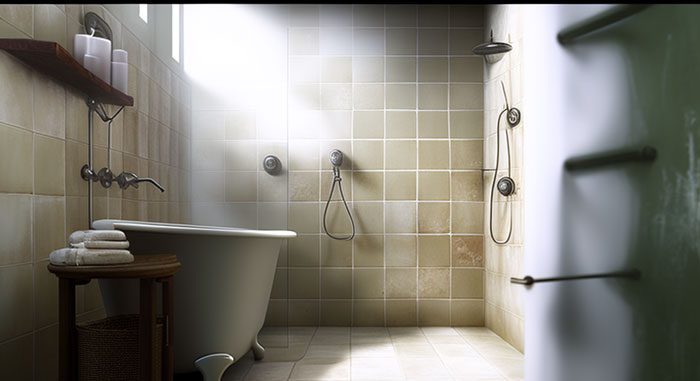
Similarly, certain types of glasses are now also available, which are treated with special coatings allowing them to repel water droplets, thus avoiding this problem altogether.
Such anti-fog solutions provide long-lasting protection against condensation build-up over time, thus helping keep surfaces completely clear of any potential markings caused due to steaming hot showers or baths.
Health Risks Associated With Steam Mark Removal
Health risks related to steam mark removal include skin irritation, eye irritation, and respiratory problems due to inhalation of hazardous vapors or fumes released from certain cleaning products.
Individuals may be exposed to allergens such as formaldehyde which have been found in some common cleaning agents used in steam mark removal.
Improper use of tools such as abrasive scrubbing pads may lead to physical injuries such as cuts or abrasions.
What Common Mistakes Do People Make When Removing Steam Marks?
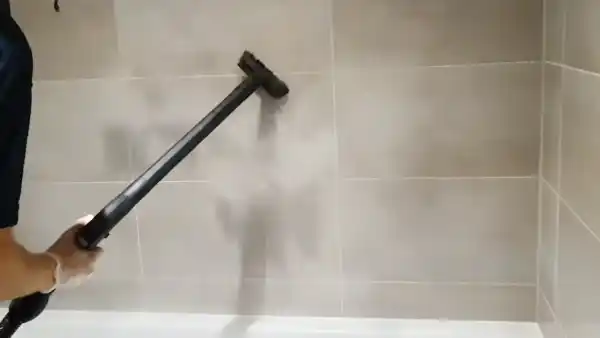
Common mistakes people make when trying to remove steam marks include using too much pressure, using the wrong cleaning products, or neglecting to rinse the surface after cleaning adequately.
Applying too much pressure can cause damage to the surface and make it more difficult to remove the steam mark. Additionally, certain cleaning products may contain harsh chemicals that can damage the finish of a surface and make it harder to clean.
Furthermore, water spots and mineral deposits can potentially form if the surface is not properly rinsed off after cleaning.
Are there any Environmental Risks Involved with Steam Mark Removal?
Steam mark removal poses potential environmental risks that include potential contamination of waterways through improper disposal of unsafe materials used during cleaning processes.
Some chemical-based cleaners used for steam mark removal can contain volatile organic compounds (VOCs), which may contribute to air pollution when released into the atmosphere.
Improper disposal of any hazardous materials used during cleaning processes may lead to contamination of soil and groundwater resources.
Don’t Let Steam Marks Ruin Your Bathroom
As we’ve discussed above, it is possible to successfully clear steam marks from bathroom walls without damaging or discoloring them.
With the right cleaning products and techniques, you can easily restore your bathroom to its former glory without having to resort to costly repairs or replacements. When it comes to preventing steam marks in the future, however, it’s important to take action before they form.
This includes ensuring proper ventilation in moisture-prone areas such as bathrooms and showers, avoiding harsh cleaners, using mild detergents, and regularly wiping down surfaces.
This also includes investing in shower curtains and door seals designed to reduce moisture buildup in your home. With these tips in mind, you can enjoy a pristinely clean bathroom with minimal maintenance.

